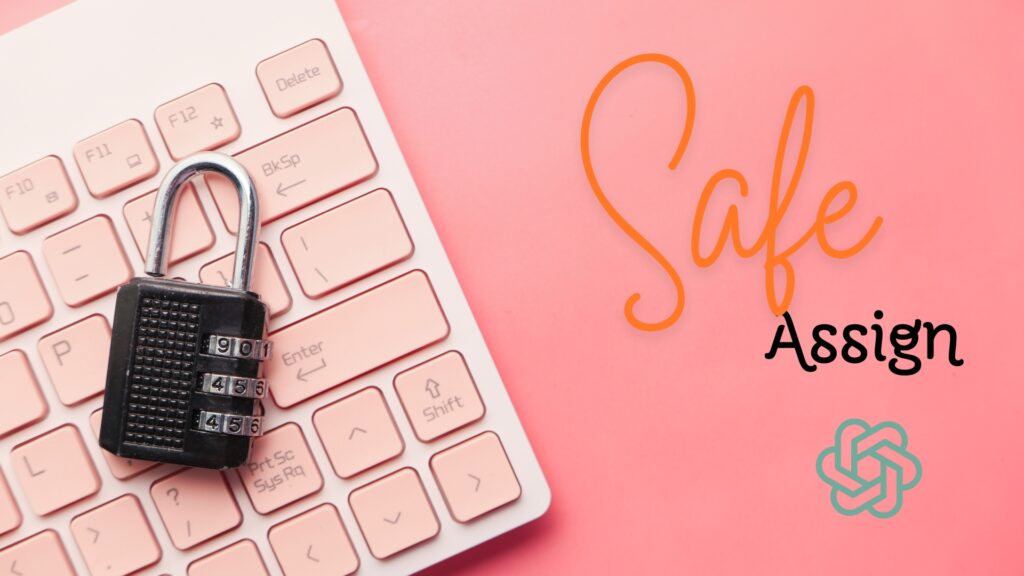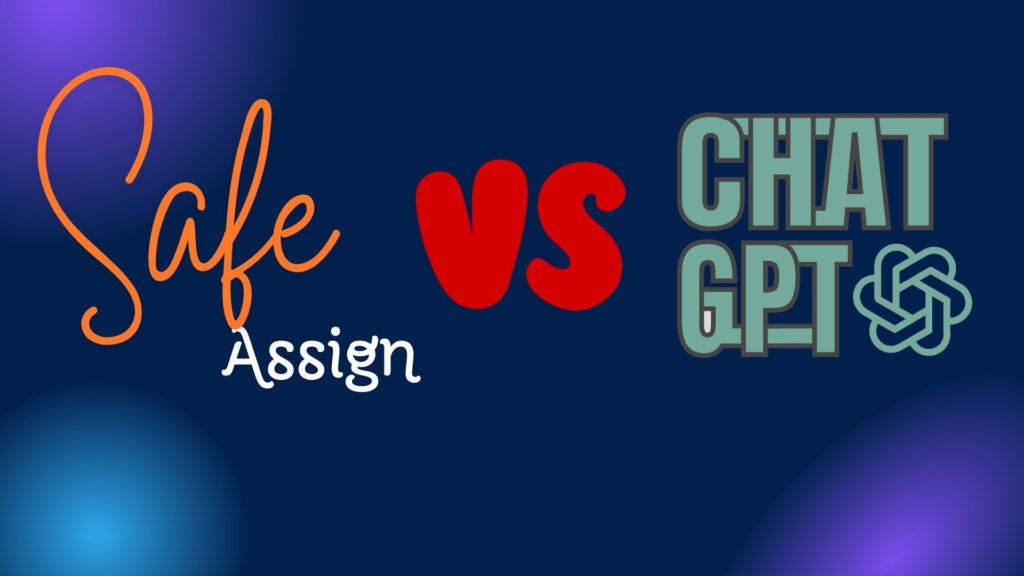Introduction
In the contemporary educational landscape, the advent of sophisticated artificial intelligence (AI) technologies such as ChatGPT has introduced both opportunities and challenges. One such challenge is maintaining academic integrity, a task that has traditionally been aided by plagiarism detection tools like SafeAssign.
SafeAssign, integrated within the Blackboard learning management system, serves as a critical tool in educational settings, aiming to detect plagiarism and encourage originality by comparing student submissions against extensive databases of academic papers, web content, and a repository of previously submitted work.
However, as AI technologies evolve, so too does their potential use in academic settings, raising questions about the effectiveness of existing plagiarism detection methods. Specifically, the emergence of AI-driven text generators like ChatGPT, which can produce highly original, human-like text, presents a unique challenge.
These generators do not simply regurgitate existing texts but create new content that could potentially bypass traditional detection algorithms that rely on direct text matching.
This raises an important question for educators and technologists alike: Does SafeAssign have the capability to detect submissions created by AI technologies such as ChatGPT? Addressing this question is crucial not only for preserving the integrity of academic assessments but also for understanding the limitations and necessary advancements in plagiarism detection technology.
As ChatGPT and similar tools become more accessible and widely used, the ability of tools like SafeAssign to adapt and identify such content becomes paramount. This article explores SafeAssign’s mechanisms, its effectiveness against AI-generated text, and the broader implications for academic integrity in the age of AI.
What is SafeAssign?

SafeAssign is a plagiarism detection service that is part of the Blackboard learning management system, widely used in educational institutions. It helps educators prevent plagiarism by automatically comparing submitted assignments against a comprehensive database of academic documents, websites, and a repository of previously submitted papers.
When a student submits an assignment through SafeAssign, the tool checks the text against these sources to identify portions of the assignment that may have been copied from elsewhere.
SafeAssign generates a report that provides a detailed breakdown of the matching sections, including specific percentages of the submitted text that match existing sources. This report helps instructors determine whether parts of an assignment were taken from other works and whether citations are needed or if plagiarism has occurred.
SafeAssign is not only used as a deterrent to plagiarism but also as an educational tool to teach students about the importance of proper citation practices and maintaining academic integrity. It encourages students to write original works and to use sources ethically and responsibly.
What methods does SafeAssign use to detect plagiarism?
SafeAssign uses several methods to detect plagiarism in academic work submitted by students. Here’s a breakdown of how it operates:
- Text-Matching Algorithms: At the core of SafeAssign’s functionality are text-matching algorithms. These algorithms compare the text submitted by students against a database of existing sources. This database includes billions of internet sources, academic articles, and an institutional document archive which consists of previously submitted student papers.
- Proportional Matching: SafeAssign doesn’t just look for exact matches between texts; it also checks for partial matches. This means it can detect instances where students may have changed a few words in a sentence or paraphrased sections of existing texts without proper attribution.
- Word Frequency Analysis: By analyzing the frequency of words and phrases, SafeAssign can identify potentially copied content that may not exactly match but shows a high level of similarity to existing sources.
- Citation Analysis: SafeAssign also examines the text for the proper use of citations. It helps distinguish between properly cited material and plagiarized content. This is particularly useful in academic settings where proper citation is crucial.
- Originality Reports: Once the analysis is complete, SafeAssign generates an Originality Report that details the percentage of the text that matches other sources. This report highlights specific parts of the text that match existing content and provides links to the sources, allowing instructors to review and assess the nature of the matches.
These methods enable SafeAssign to effectively assist educators in identifying and addressing plagiarism in academic submissions.
Does SafeAssign Detect ChatGPT?

As of the latest available information, SafeAssign primarily detects plagiarism by comparing submitted texts against a database of academic papers, web content, and previously submitted works to identify matches. It relies on these matches to flag potential plagiarism.
SafeAssign is not specifically designed to detect whether a text was generated by ChatGPT or other AI models. ChatGPT can generate original content that does not directly match any existing sources, potentially allowing it to bypass detection systems that rely solely on matching text to known sources.
Therefore, if a text generated by ChatGPT does not closely mimic or replicate database contents or previously submitted materials, SafeAssign might not flag it as suspicious solely based on its origin as AI-generated content.
However, as AI-generated text becomes more common, there may be developments in plagiarism detection technologies, including updates to tools like SafeAssign, to better identify and flag content that seems to be generated by AI, based on style, consistency, or other markers that differ from typical student-generated work.
For now, the effectiveness of SafeAssign in detecting AI-generated text like that from ChatGPT largely depends on the uniqueness of the text and its similarity to existing documents within its databases.
Conclusion
The question of whether SafeAssign has the capability to spot texts generated by AI platforms like ChatGPT is pivotal in today’s digital academic environment. SafeAssign, a tool integrated within Blackboard’s learning management system, is designed to promote originality and prevent plagiarism by comparing submitted assignments against a comprehensive database.
This database includes a vast collection of academic papers, websites, and a repository of student papers submitted across participating institutions.
ChatGPT, on the other hand, is an advanced AI text generator developed by OpenAI. It is capable of producing text that is coherent, contextually relevant, and syntactically original based on the prompts it receives.
This ability to generate original content poses a significant challenge for traditional plagiarism detection tools like SafeAssign, which primarily rely on detecting similarities and direct text matches.
SafeAssign’s methodology centers on matching text against previously indexed sources. If a ChatGPT-generated document does not replicate or closely mirror texts within SafeAssign’s databases, it is unlikely to be flagged as plagiarized.
This means that entirely original content created by ChatGPT could pass through SafeAssign without detection, simply because it does not match any existing sources.
Moreover, the sophistication of AI text generators means that they can adapt their output based on the input, potentially mimicking a student’s writing style or fulfilling specific academic criteria. This adaptability further complicates the ability of tools like SafeAssign to detect AI-generated content unless specific patterns or known AI-generated phrases are recognized.
In conclusion, while SafeAssign is proficient at identifying traditional plagiarism through direct text matches, its capability to detect AI-generated texts like those from ChatGPT is limited.
This limitation highlights a growing gap in traditional academic integrity tools, which may need to evolve and incorporate new technologies capable of recognizing AI-generated content to maintain their effectiveness in the era of advanced artificial intelligence.

